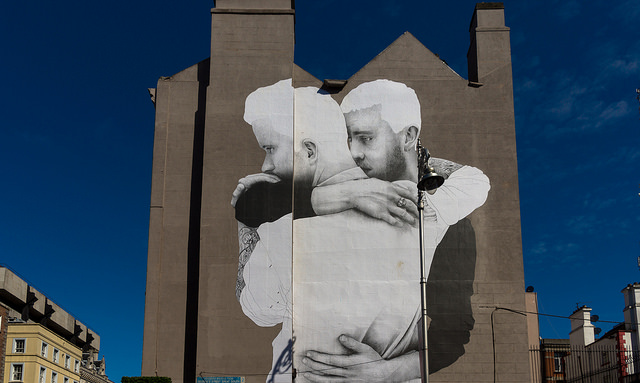
From rainbow shamrocks to trending hashtags, the successful referendum on marriage equality in Ireland has galvanised enormous international interest. Chants of “it’s time” (for other countries to amend their gendered definitions of marriage) have reverberated through social media and offline communities.
In Australia the momentum for reform has escalated. Opposition Leader Bill Shorten has introduced a bill to permit same-sex couples the ability to marry and a number of MPs have “come out” to support reform. Opinion polls have consistently reiterated that support for marriage equality is over 70 per cent. Even conservative commentators like Alan Jones and Andrew Bolt have conceded that opposing change to marriage is futile. The only obstacle remains a legislative one: securing enough votes across partisan divides.
The arguments for and against amending the Commonwealth Marriage Act 1961 are well rehearsed. Essentially, amending five words in the Act is all that is required to grant people the ability to marry their partner – regardless of their sex or gender. It eliminates formal relationship discrimination and guarantees equality before the law. In contrast, the mainstream opposition to marriage reform concentrates on procreation and children: objects that are not regulated by our marriage laws. Many opponents find themselves as poor caricatures of Helen Lovejoy shouting various iterations of the phrase, “Won’t somebody please think of the children!”
Yet, the public debate on marriage equality takes us beyond legal principles. In particular, both sides of this debate reveal an enormous investment in the symbolic purchase of marriage. For pro-marriage equality advocates, enabling gay couples to marry is heralded as a marker for social inclusion and improving mental health. For those who oppose reform, the recognition of same-sex relationships as marriage undermines religion, history, tradition, and culture.
In navigating these different positions, people are often asked to “respect” the views of both sides. It is a mandate of civility. But there is nothing “respectable” in shielding homophobia from accountability. People do not demonstrate respect when they argue that same-sex parenting is child abuse. People do not demonstrate respect when they use religion as a cover for claiming being gay is an illness or sin. There is also no respect when people claim that marriage is the only legitimate form of intimacy or kinship. We should interrogate parochial assumptions (no matter which “side” invokes it) instead of using respect as a cover for faux civility in our “debates.”
Marriage reform is enormously important for so many in the LGBTI community. But it would be remiss to consider this issue as the panacea in our struggles for justice as a community. Many young people and elders are still forced to “closet” who they are – partly as a consequence of exemptions to anti-discrimination laws – to avoid being kicked out of school or aged care facilities. Asylum seekers are still being interdicted and caged in countries that criminalise homosexuality. Trans people are still denied legal recognition on the basis of whether they have had surgery or not. Intersex infants are routinely subjected to surgeries to “correct” their bodily variations. We need to recognise that equality does not guarantee justice in our communities.
With an increasing likelihood of a parliamentary vote on marriage equality in Australia, “it’s time” for us to move past the polarising “debate” and recognise what is at stake. Formal equality is important but it is by no means the end of “progress” for LGBTI rights in Australia. Homophobia and transphobia still continues to cut across a number of legal, political, and social arenas. Let’s stop “respecting” its manifestations, especially in our public discourse, and start holding institutions and individuals to account for it.
—
Senthorun Raj is a doctoral researcher at the Sydney Law School and a Right Now columnist. Follow him on Twitter: @senthorun
Feature image: Mural in Dublin, Ireland. By William Murphy/Flickr
This column has been assisted by the Australian Government through the Australia Council, its arts funding and advisory body.

